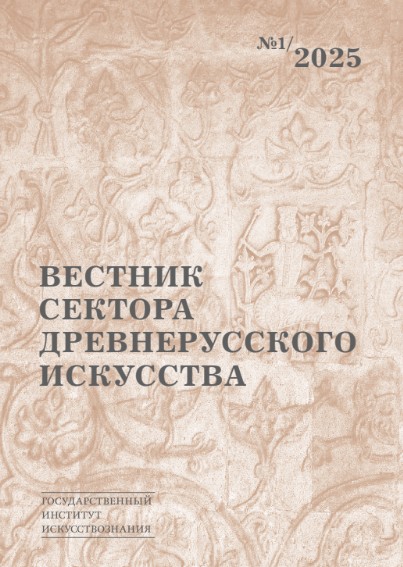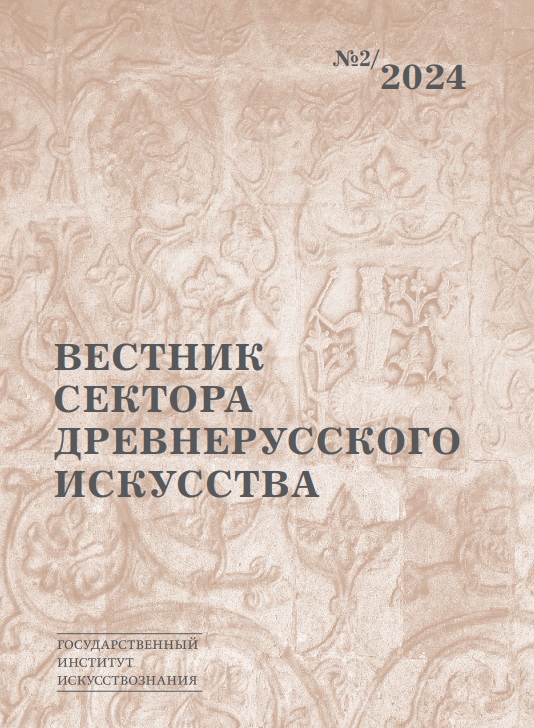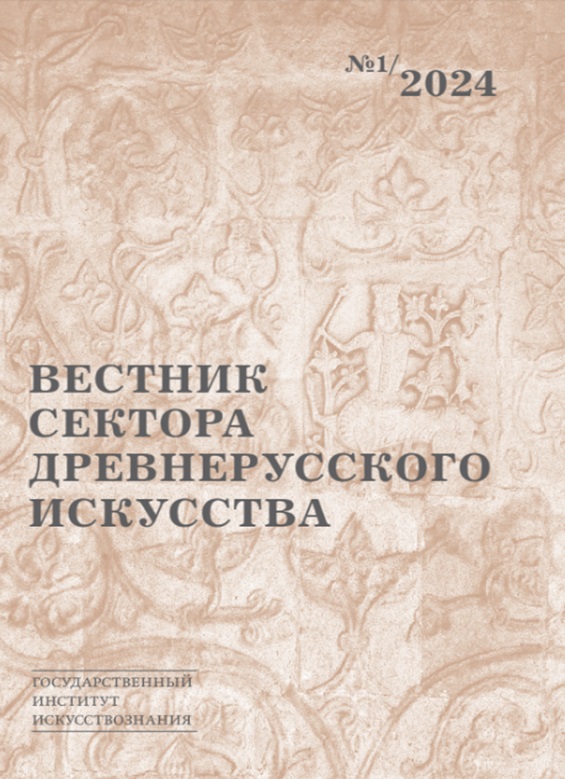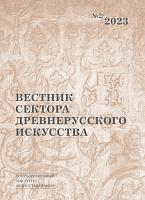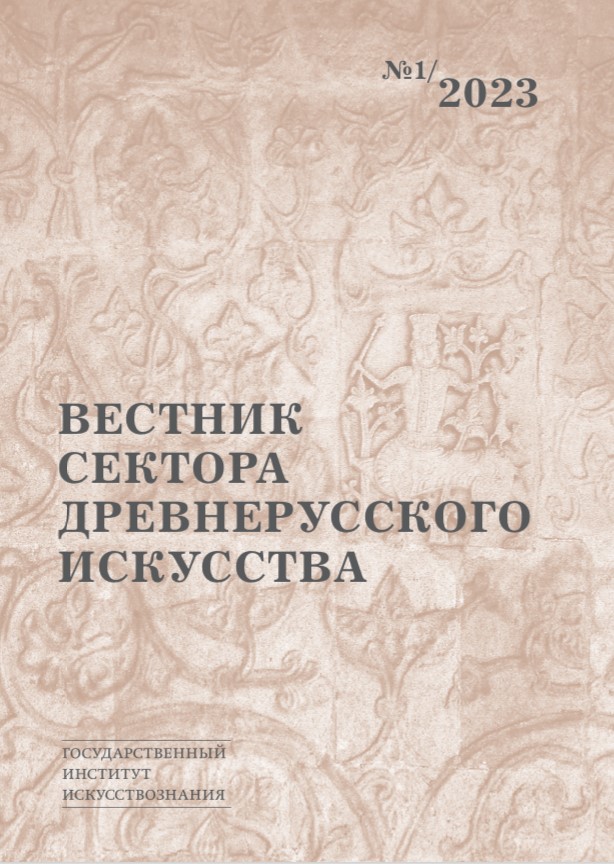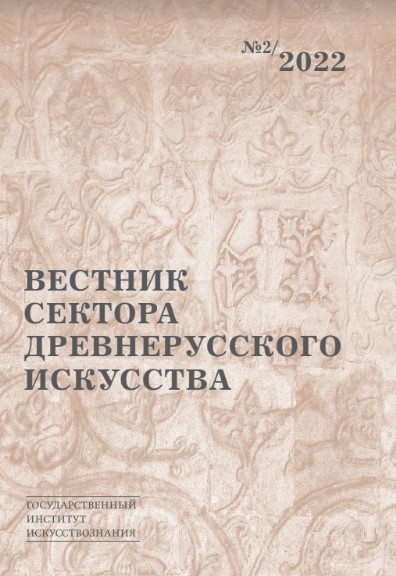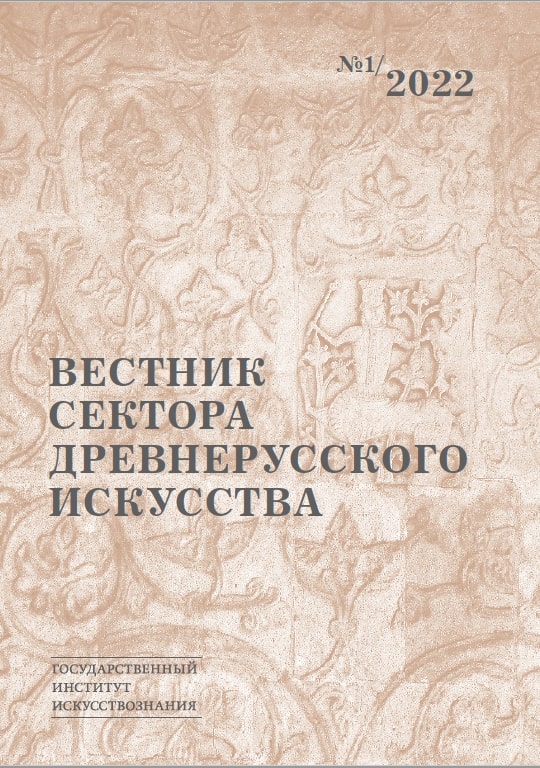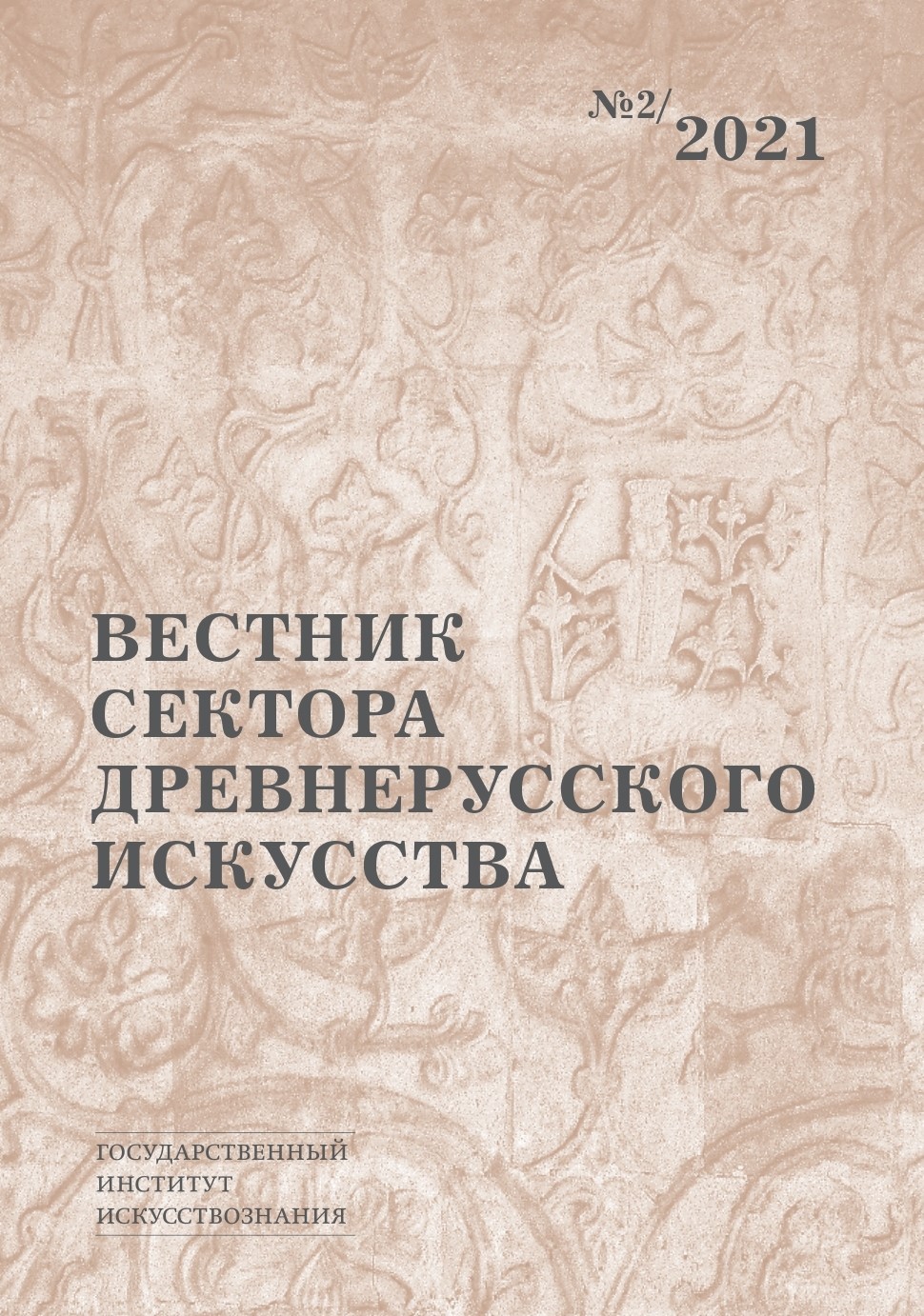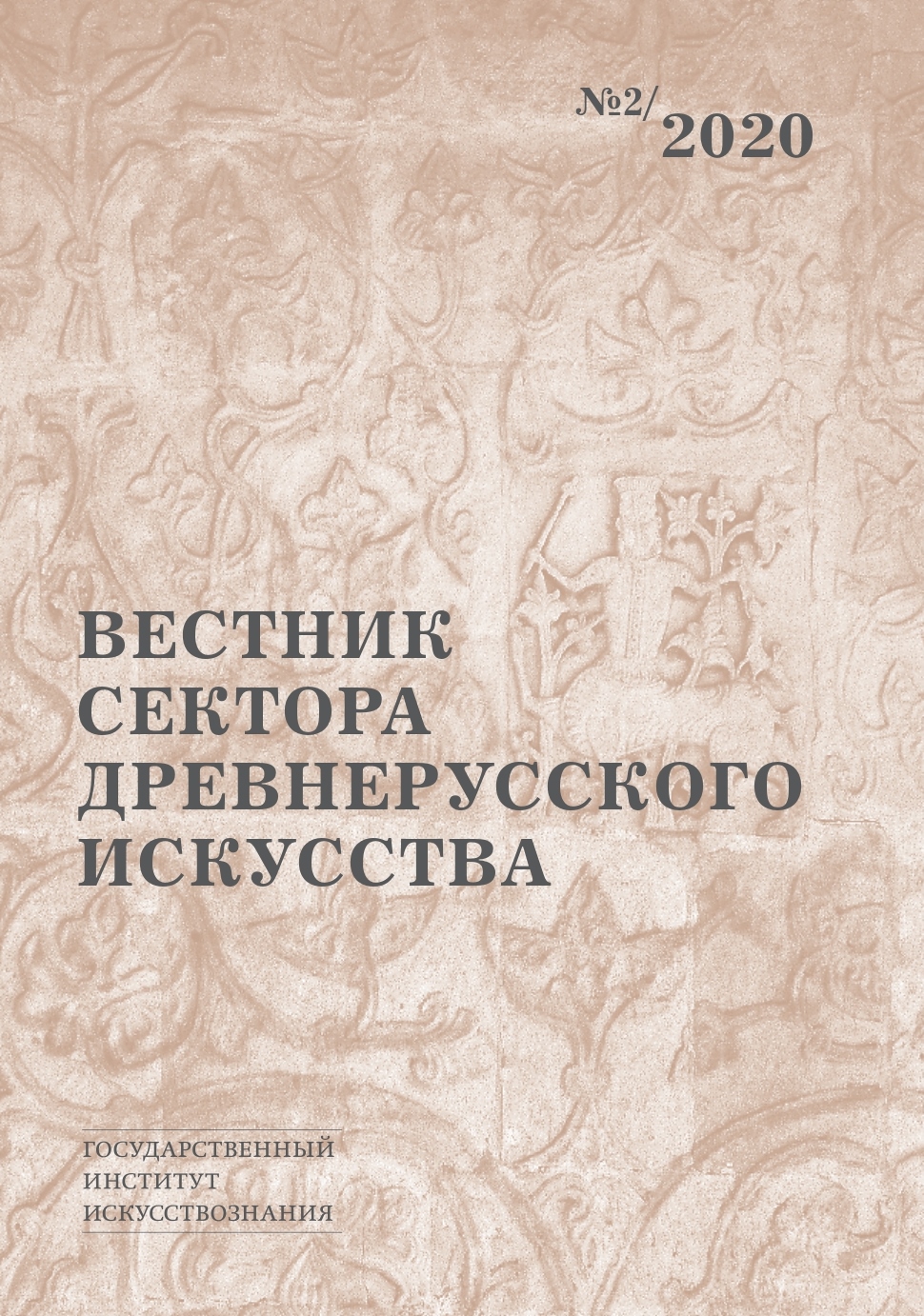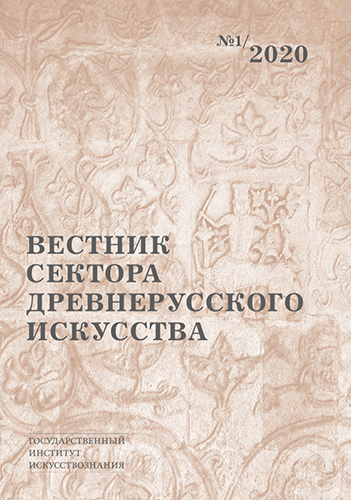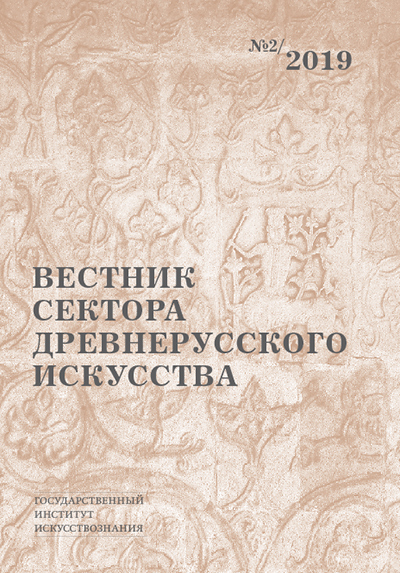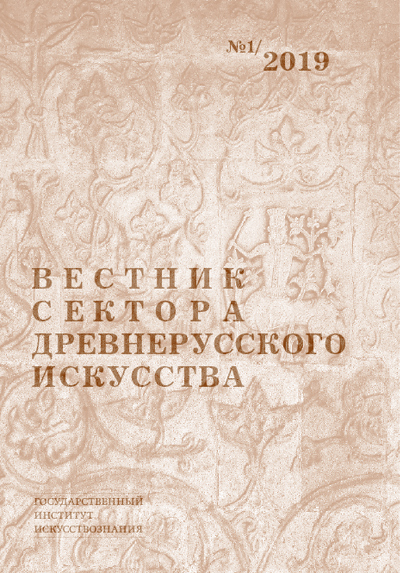2024 № 1
Articles
Abstract
Among more than two hundred Greek manuscripts in minuscule bouletée, M.L. Agati identified a group of nine codices written by “scribe A” (Scriba A) and characterized his handwriting as bouletée élancée: Athos, Vatopedi 108; Vat. Barb. gr. 310, fol. 8r–111v; Kalabryta, Μονὴ μεγάλου σπηλαίου, 1 (now lost); Leucosia, Ἀρχιεπ. Βιβλ. 25; Moscow, SHM, Syn. gr. 99 (Vlad. 99); Paris, BNF, gr. 480; Paris, BNF, gr. 713 + Suppl. gr. 240 (fol. 238r–241v); Patmos, 43; Patmos, 44.
However, the attribution of these manuscripts to one hand is questionable. Based on palaeographic analysis, author proposes to exclude from this group at least two manuscripts that were created by another calligrapher, conventionally named by author as “scribe A-I”. These are the Homilies of John Chrysostom, Syn. gr. 99 (Vlad. 99) and the Homilies of Basil of Caesarea, Paris, BNF, gr. 480. Apart from the distinctive features of the handwriting, this conclusion is confirmed by details of the ornament and unity of style and typology of decoration.
In addition, the article focuses on a new attributional feature that distinguishes the writing style of “scribe A-I”: the unsystematic use of an alternative grapheme (delta Latina) in titles and quotations written in majuscule. The phenomenon of interlingual use of a single grapheme in Auszeichnungs-majuskel is considered as a previously unexamined way of visual intensification of its function.
Keywords
Greek manuscripts, Greek palaeography, bouletée élancée, Auszeichnungsschrift, alternative grapheme, Byzantine book ornament
Svetlana Lashchuk. Inscriptions on the Reliquary of Dionysius of Suzdal: Philological Commentary
Abstract
The article presents a philological analysis of the complex of inscriptions on the reliquary of Dionysius of Suzdal (1383). Detailed readings of all inscriptions are provided, "dark places" are clarified, and a general characterization of the circle of sources, language, and syntactic structure of these texts is given. It is shown that the inscription around the cross relies on the tradition of Byzantine epigrams on reliquaries and has features of a poetic text, while the inscriptions on the relics are built on quotations and reminiscences from liturgical texts related to the tradition of venerating Passion relics. References to these texts are intended to emphasize the meaning of the Passion reliquary as an object of worship. The analysis of the composition of the dedicatory inscription, going beyond both the Russian and Byzantine formulas, allows identifying a favorable for Dionysius political message enclosed in it.
Keywords
Old Russian epigraphy on objects, reliquary of Dionysius of Suzdal, dedicatory inscription, inscriptions on reliquaries, liturgical quotations
Liudmila Vorontsova. Precious Decoration of the icon "The Mother of God of Peribleptos"
Abstract
The icon "The Mother of God of Peribleptos" comes from the collection of the Trinity-Sergius Lavra. Documentary information about the origin of the icon and its precious decoration has not been preserved, their appearance in the Trinity Monastery can only be said hypothetically. In historiographical literature, the icon was considered primarily as a monument of icon painting, its precious decoration attracted the attention of researchers to a much lesser extent. Currently, the icon is decorated with golden crowns and ochelle (a part of a headdress) embroidered with pearls. On the crown and gold castes there are numerous holes from nails, traces of, alterations and interruptions, nail holes over the entire surface of the icon field. The article examines the composition and changes in the safety of the precious decoration on the basis of information from documentary sources, first of all, these are inventories of the Trinity-Sergius Lavra in 1641, 1701, 1735, 1908. Written sources indicate that the precious decoration of the icon was not formed at the same time, has survived to this day not in its original form and is a complex composite work. Its research confirms the obvious difference in the time of origin of the individual parts. The most ancient parts are the crown of the Mother of God with golden discs and cabochons in high castes. Around the same time or a little later, it is possible to date the golden "nests" and filigree rosette in the crown of Christ, the basma base of which dates back to the second half of the 16th century. Woven ubrus appeared no earlier than the 16th century.
Keywords
Icon, The Mother of God of Peribleptos, Trinity-Sergius Lavra, precious decoration, iconography, dating, attribution
Abstract
The iconographic type called "The Mother of God of Yaroslavl" is not connected with Yaroslavl and the family of the Yaroslavl princes. This type appears in Russian art at the late 15th century, most likely in Novgorod and very quickly spreads in the Moscow lands. The type is based on the Italo-Cretan model, supplemented with details observed in Trecento art. After the first third of the 16th century interest in this type declined.
Keywords
The Mother of God of Yaroslavl, icon painting, Novgorod tradition, Moscow tradition, iconographic type, izvod (version), Yaroslavl princes, western influences
Abstract
The article is devoted to the study of the sculpture “St. Nicolas (“Mozhaisky”)” from the State Historical Museum. Based on iconographic and stylistic analysis it is proved that the sculpture considered in the article is included in the group of carved icons of the saint of 16th century. The central objects of the group are sculptures from the Assumption Cathedral in Peremyshl (the second quarter of the 16th century) and Pskov (until 1540).
Keywords
State Historical Museum, Old Russian carving, wood sculpture, St. Nicolas (“Mozhaisky”), 16th century
Abstract
The composition “Vision of St. Gregory the Theologian” in the Archangel Michael Cathedral of Moscow Kremlin occupies the eastern wall of the cathedral above the altar and part of the northern wall of the altar (currently hidden behind the iconostasis from the 1680s). Based on the text of the so-called “Explanatory Liturgy” it represents a major milestone in the development of the painting system of an Orthodox church and an example of a rare innovative subject in the cathedral decoration system, copied and carefully reproduced during re-painting in 1652–1666. Since the cathedral was first painted in the middle of the 16th century (1564-65), we can assume with a high degree of confidence that for the first time in monumental painting this composition appeared precisely in the Archangel Michael Cathedral.
Keywords
Archangel Cathedral of the Moscow Kremlin, ancient Russian art, Russian art of the late Middle Ages, monumental painting, art of the 16th-17th centuries, Interpretive service, Vision of St Gregory the Theologian
Abstract
The image of The Vision of Gregory the Theologian is based on the text of a widespread interpretation of the liturgy in Medieval Russia, which is usually entitled as The Revelation of St. Gregory the Theologian on the Liturgy or The Interpretation of the Divine Service. In Russian art it seems to appear at the beginning of the 16th c. in the frescoes of the Chudov Monastery Katholikon. Subsequently, this plot is found in frescoes at the turn of the 16th–17th cc., as well as in paintings of the second half of the 17th c. The Cretan manuscript Vat. gr. 2137 is the only one known example that was not created on the territory of Medieval Russia. However, it is quite different from the Russian versions of this subject. The miniatures convey in detail all the features of the earthly liturgy, literally illustrating the text, without separating the main from the secondary. At the same time, Russian images emphases on the most important element – the slaughter of the Christ, which is placed in the center of the entire cycle. In general, the Russian artist understood this plot not as a direct illustration of the text, but as a generalized image of the liturgy. That makes The Vision of Gregory the Theologian subject similar to other Russian liturgical subjects.
Keywords
Liturgical sсenes, Medieval Russian art, post-Byzantine art, monumental painting, Gregory the Theologian
Abstract
The article examines the most important question: when and where, in what social circles Western Bibles in prints, which in the second half of the 17th century became iconographic examples of works of Russian art, first appeared in Russia. The article summarizes a wide range of studies by Russian scientists carried out from 1870 to recent times. The author analyzed works devoted to clearly dated Russian paintings, where an appeal to Western sources was revealed: the Assumption Cathedral of the Kirillo-Belozersky Monastery (1650), the Trinity Church in Nikitniki in Moscow (1652), etc. Works of art were considered in combination with examples of foreign Bibles, whose presence in Russia in the middle of the 17th century was documented (records of owners, archival information). The author dates an example of the Theatrum biblicum from 1639, stored in the Russian National Library with a lost title page. This confirms the opinion of O.A. Belobrova, who considered this example to be the earliest in Russia, associated with the book collection of Tsar Fyodor Alekseevich, and earlier Alexei Mikhailovich. As a result of the conducted research, the author found convincing evidence that Western Bibles consisting only of engravings appeared in Russia in the 1640s, that is, much earlier than previously thought. Also, in the article examples of the Theatrum biblicum and the Bible with engravings by P. van der Borcht are published for the first time.
Keywords
Russian art of the second half of the 17th century, Western Bibles in prints, Theatrum biblicum, Biblia Natalis, Merian Bible, P. van der Borcht, P. Schut, O.A. Belobrova, I.L. Buseva-Davydova
Abstract
The article is devoted to the description and characteristics of the activities of P.D. Baranovsky during the restoration of monuments of the Assumption Monastery in Alexandrov. His works of the 1920s and 1930s, mainly concentrated on the Church of the Intercession, provided new material for research into both architecture and ancient Russian painting. The text was prepared based on previously unpublished materials from the personal archive of P.D. Baranovsky.
Keywords
Assumption Monastery, Alexandrovskaya Sloboda, Church of the Intercession, Pyotr Baranovsky, restoration, medieval Russian architecture, frescoes.
Chronicles
Publications
Abstract
The article attempts to show, based on published historical evidence and archival sources, the history of a unique architectural monument – the Church of the Assumption of the Mother of God in Kotelniki on Pokrovka – in the 17th -18th centuries. The little-studied architectural complex of the church is of special scientific concern, due to the fact that the iconostasis of the building destroyed in 1936 has been preserved almost completely (currently represents an iconostasis set). The reconstruction of the carved gilded iconostasis barrier will allow further study of the significant monument of Russian applied art.
Keywords
Church of the Assumption of the Mother of God in Kotelniki on Pokrovka, 17th-18th centuries, building history, reconstruction of the iconostasis
Seyranush Manukyan. Artistic image of Armenian mitres
Abstract
For the first time, Armenian mitres are presented as works of fine art. Embroidered with subject motives, unlike the Latin mitres from which they originated, the mitres reflect the images, symbolism, style and iconography of the monuments of Armenian church art of the 17th-19th centuries.
Keywords
Armenian mitres, artistic features, gold and silver embroidery, style and iconography of images
Restoration chronicles
Exhibitions
Conferences
Maria Makhanko. 2nd conference in memory of N. A. Mayasova (May 16-19, 2024)
